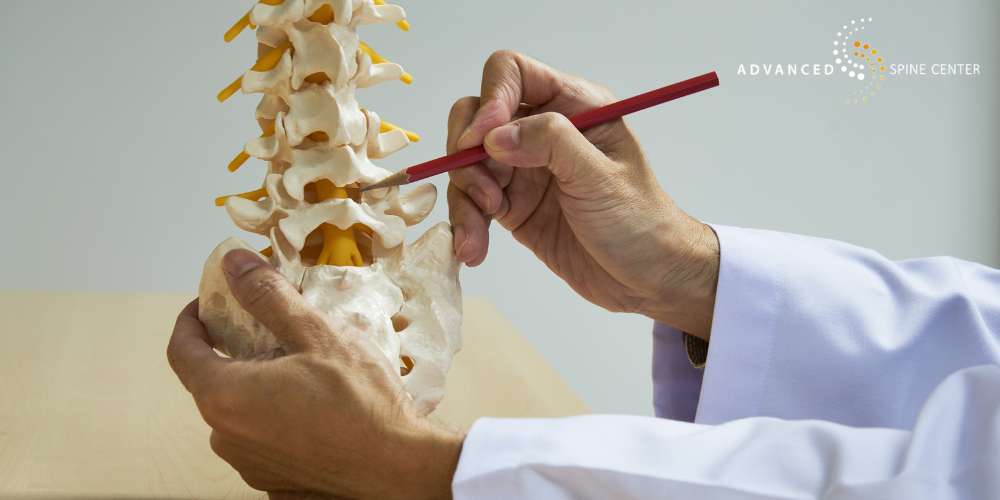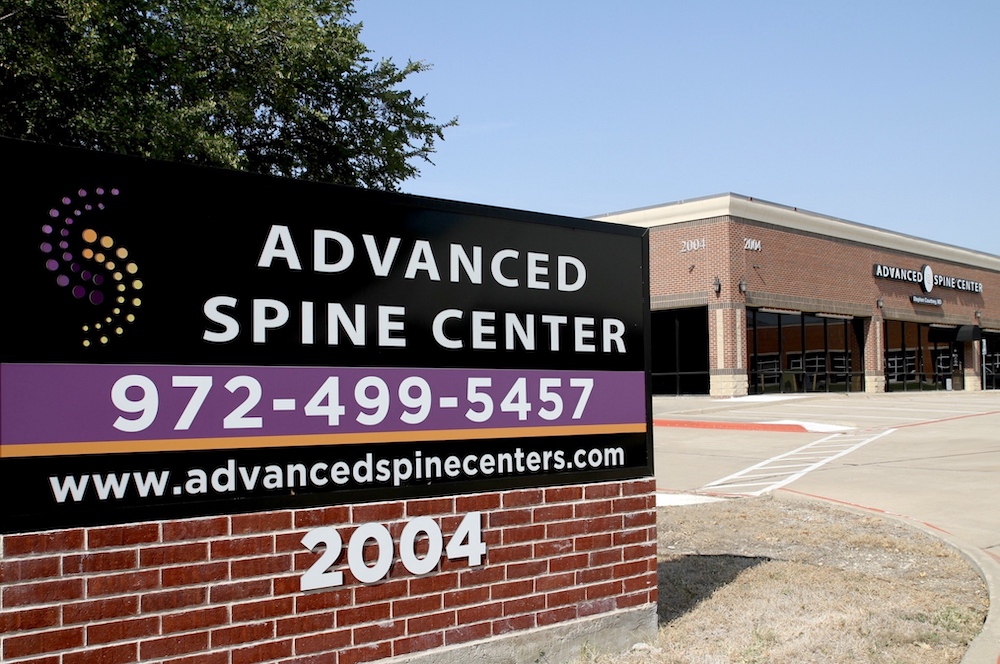Lumbar Minimally Invasive Spine Surgery McKinney, TX
Home > Orthopedic Spine Surgeon McKinney, TX > Lumbar Minimally Invasive Spine Surgery McKinney, TX
Specialties

At the Advanced Spine Center, we are your premier destination for comprehensive spine care in McKinney, TX. Our clinic specializes in cutting-edge Lumbar Minimally Invasive Spine Surgery (LumbarMIS), an innovative approach designed to address various lumbar spine conditions with precision and minimal disruption.
If you’ve been suffering with lower back pain that conservative treatments haven’t helped, lumbarMIS could be the answer you’ve been searching for. With nearly three decades of experience under his belt, Dr. Courtney is an expert when it comes to minimally invasive spinal surgery. You’re ready to get back to your pain-free life, and our team is here to help you do that.
To schedule an appointment with us, please call 972-499-5457 or submit an online request by clicking the button below.
What Is Minimally Invasive Surgery (MIS) for the Lumbar Spine?
Minimally Invasive Spine Surgery (MIS) revolutionizes traditional surgical approaches by employing advanced techniques that allow surgeons to operate through small incisions. Using specialized tools and state-of-the-art imaging technology, our skilled surgeons access the affected area with remarkable precision, minimizing trauma to surrounding tissues. This results in reduced postoperative discomfort, shorter recovery times, and quicker return to daily activities for our patients.
By using minimally invasive techniques for the procedure, patients can undergo back surgery without worrying about excessive downtime, pain, and other complications.
What Conditions Does LumbarMIS Treat?
Lumbar Minimally Invasive Spine Surgery (LumbarMIS) is a highly effective approach that addresses various conditions affecting the lumbar spine. Examples of these conditions include the following.
Lumbar Herniated Discs
Herniated discs in the lumbar spine can cause debilitating pain and limited mobility. LumbarMIS effectively addresses this condition by precisely removing the damaged portion of the disc that is pressing on the nerves, providing relief from pain, numbness, or weakness in the lower back and legs.
Lumbar Spinal Stenosis
Lumbar spinal stenosis, characterized by the narrowing of the spinal canal, often leads to compression of the nerves in the lower back. Our minimally invasive techniques help alleviate this compression, reducing pain, tingling, or numbness in the legs and improving overall functionality.
Lumbar Spinal Instability
For patients experiencing lumbar spinal instability, LumbarMIS offers solutions to stabilize the affected area. By providing support to the spine, this approach can alleviate symptoms and restore spinal function.
Degenerative Disc Disease
LumbarMIS can treat degenerative disc disease, a condition where the discs between vertebrae deteriorate, causing pain due to reduced cushioning and flexibility.
Spondylolisthesis
This occurs when one vertebra slips forward over the one below it, resulting in pain and nerve compression. LumbarMIS can help stabilize the affected area, reducing pain and restoring spinal alignment.
Recurrent Lumbar Disc Herniation
In cases where a previous herniated disc has been treated but recurs, LumbarMIS can offer precise re-treatment options, often minimizing the need for extensive surgery.
What Are the Different Types of Minimally Invasive Spine Surgery?
Minimally Invasive Lumbar Spine Surgery encompasses various techniques tailored to address specific spinal conditions. Below, we outline several types of minimally invasive spinal surgeries used to treat lumbar spine issues.
Minimally Invasive Lumbar Fusion
Lumbar fusion involves the fusion of two or more vertebrae to eliminate motion between them, reducing pain caused by movement. Minimally invasive techniques allow for this fusion without extensive tissue damage, promoting quicker healing and recovery.
Minimally Invasive Lumbar Discectomy
In Lumbar discectomy, surgeons remove the portion of the herniated disc that is pressing on the nerve, relieving pain and allowing for improved nerve function.
Minimally Invasive Lumbar Decompression
Lumbar decompression surgery involves removing parts of bone or tissue that are compressing spinal nerves, thereby relieving pressure and reducing symptoms.
Minimally Invasive Lumbar Microdecompression
Similar to decompression surgery, microdecompression aims to relieve nerve pressure through the removal of small amounts of tissue or bone.
Minimally Invasive Transforaminal Lumbar Interbody Fusion (TLIF)
TLIF is a fusion technique that stabilizes the spine by accessing the intervertebral disc space through minimally invasive means, reducing pain and improving spinal stability. Specifically, it allows surgeons to access the affected area through the structures in the spine known as the foramen.
What Benefits Does Minimally Invasive Lumbar Spine Surgery Offer?

Due to the nature of lumbarMIS, patients can benefit from lumbarMIS in many ways. We outline these benefits below.
- Reduced Tissue Damage: Smaller incisions result in minimal disruption to surrounding tissues, leading to less trauma and a quicker healing process.
- Faster Recovery: Patients typically experience shorter hospital stays and quicker return to daily activities compared to traditional open surgery.
- Cosmetically Appealing Results: Smaller incisions often result in less scarring and improved cosmetic outcomes.
- Reduced Postoperative Pain: Minimized tissue trauma leads to decreased postoperative discomfort for patients.
What Are the Risks of LumbarMIS?
While LumbarMIS offers numerous benefits, potential risks include infection, bleeding, nerve damage, or anesthesia-related complications. However, our experienced surgical team takes every precaution to minimize these risks and ensure a safe surgical experience for our patients.
Preparing for Lumbar Minimally Invasive Surgery
Preparing for lumbar minimally invasive spine surgery involves various steps to ensure patients have a successful procedure and smooth recovery.
- Consultation and Evaluation: Meet your surgeon for a comprehensive assessment. Discuss medical history, medications, and allergies. Additional tests may be ordered to evaluate your health and gather additional information.
- Follow Pre-operative Instructions: Adhere to specific guidelines provided by your surgeon, including medication adjustments, dietary restrictions, and possibly quitting smoking. Arrange transportation for the surgery day.
- Prepare Your Home: Create a comfortable recovery space and stock up on essentials. Arrange for assistance during the initial recovery phase at home.
- Understand the Procedure: Discuss the details, expected outcomes, risks, and potential complications with your surgeon.
- Attend Pre-operative Education: If available, attend educational sessions offered by the hospital or surgical center to learn about the surgery and recovery process.
- Arrange Post-operative Care: Plan for assistance post-surgery, including help with daily activities and medication management.
- Maintain a Positive Mindset: Stay positive, communicate openly with your healthcare team, and address any concerns before the surgery.
- Follow Surgeon’s Recommendations: Strictly adhere to all pre-operative instructions provided by your surgeon and seek clarification for any concerns.
What Can I Expect During LumbarMIS?
During lumbar Minimally Invasive Spine Surgery (MIS), several key steps typically occur within the procedure.
- Anesthesia: You’ll receive general anesthesia to ensure you’re comfortably asleep and pain-free throughout the surgery.
- Incision: The surgeon makes smaller incisions, usually less than an inch long, instead of a larger single incision used in traditional open surgery.
- Specialized Instruments and Imaging: Specialized tools and imaging technology guide the surgeon. These instruments allow for precise access to the affected area while minimizing disruption to surrounding tissues.
- Surgical Procedure: Through the small incisions, the surgeon performs the necessary surgical steps based on the specific type of lumbar MIS being conducted, such as discectomy, fusion, decompression, or stabilization. This may involve removing damaged disc material, stabilizing vertebrae, or relieving pressure on spinal nerves.
- Closure: Once the procedure is completed, the surgeon closes the incisions with sutures or adhesive strips.
Remember that Dr. Courtney will discuss the surgical plan with you well in advance of the actual surgery. He takes every precaution to ensure a patient’s comfort and understanding regarding the procedure.
What Is Recovery Like After Minimally Invasive Lumbar Surgery?
Following LumbarMIS, patients may experience mild discomfort initially, which can be managed with prescribed medications. Physical therapy and tailored exercises will aid in regaining strength, flexibility, and overall function. Most patients experience a faster recovery compared to traditional open surgery.
What Makes a Good Candidate for LumbarMIS in McKinney?
Ideal candidates for LumbarMIS are individuals with specific lumbar spine conditions that have not responded to conservative treatments like physical therapy or medication.
However, candidacy is determined through comprehensive evaluations and discussions between the patient and our specialized surgical team.
Call the Advanced Spine Center for LumbarMIS in McKinney, TX
If you’re living with persistent back pain or have been diagnosed with a lumbar spine condition, don’t hesitate to contact the Advanced Spine Center. Our dedicated team of spine specialists is committed to providing individualized care and recommending the most suitable treatment options, including Lumbar Minimally Invasive Spine Surgery, to help you regain your quality of life.
Experience the exceptional care and expertise that define our commitment to your spinal health. Call us today to schedule your consultation and take the first step towards a pain-free, active lifestyle. Your journey to a healthier spine begins here at the Advanced Spine Center.
To schedule an appointment with us, please call our office at 972-499-5457 today.


